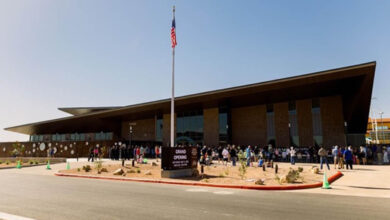
Tucson Improves National Ranking in Park Amenities, Access
The Trust for Public Land released its annual ParkScore® Index and Tucson ranked No. 74, climbing 10 spots from last year.
Tucson received above-average marks for park amenities and the new park equity category, which was added to the ParkScore index this year. Washington, D.C., was rated the nation’s best park system on the index, edging ahead of St. Paul, Minn., and followed closely by third-place Minneapolis, which held the top spot in 2020.
The ParkScore® Index ranks park systems in the 100 largest U.S. cities and is widely considered the gold standard for park evaluation.
Tucson’s 2021 ParkScore® ranking was affected by below-average scores for park access and park investment. According to The Trust for Public Land, 64% of Tucson residents live within a 10-minute walk of a park. Across all ParkScore® cities in the United States, 75% of residents live within a 10-minute walk of a park, the highest access score in the index’s 10-year history.
“We appreciate the valuable data and measurement that participating in the ParkScore® process provides,” said Tucson Parks and Recreation Director Lara Hamwey. “It highlights our areas of need and gives us the tools that support our requests to fund capital investments and park land acquisition for the ultimate delivery of great parks the entire Tucson community. We also value the new metric of measuring equity so we are able to set a baseline of how good a job we are doing and where we have room for improvement.”
The 2021 ParkScore® Index found significant inequities in park space and distribution. Across all participating ParkScore cities in the United States, residents in neighborhoods where most people identify as Black, Hispanic and Latinx, Indigenous and Native American, or Asian American and Pacific Islander have access to 44% less park space per capita than residents in neighborhoods that are predominantly white. Residents in low-income neighborhoods have access to 42% less park space than residents in high-income neighborhoods.
“Parks are always essential to our communities, and they are even more valuable in times of crisis. During this extraordinary pandemic year, people relied on close-to-home parks, trails, and open spaces to exercise and connect with nature more than ever. Parks also served as makeshift community centers for emergency services like food distribution, COVID testing, and vaccine super-sites,” said Diane Regas, president and CEO of The Trust for Public Land.
PARKSCORE METHODOLOGY AND RANKINGS
This year, the ParkScore® Index added a park equity measure to the rating system. This new rating factor can help city leaders understand and prioritize equity when making decisions about parks. The index is now based on five rating factors:
- Park equity compares per capita park space in neighborhoods of color vs. white neighborhoods and in low-income neighborhoods vs. high income neighborhoods. It also compares 10-minute-walk park access for people of color and lower-income residents. Park systems score higher if disparities are low or non-existent;
- Park access measures the percentage of residents living within a 10-minute walk of a park;
- Park acreage is based on a city’s median park size and the percentage of city area dedicated to parks;
- Park investment measures park spending per resident;
- Park amenities assesses the availability of six popular park features: basketball hoops, off-leash dog parks, playgrounds, splash pads, and other water play structures, recreation and senior centers, and restrooms.
The ParkScore® Index uses advanced Geographic Information Systems and spatial analysis to evaluate park accessibility. Instead of measuring distance to a local park, the rating system’s GIS technology considers the location of park entrances and physical obstacles to access. For example, if residents are separated from a nearby park by a major highway, the index does not count the park as accessible to those residents, unless there is a bridge, underpass, or easy access point across the highway.
Municipal leaders use ParkScore® information to guide park improvement efforts, studying park access on a block-by-block basis and pinpointing the areas where new parks are needed most. The ParkScore® website, www.tpl.org/parkscore, is free and available to the public, enabling residents to hold their elected leaders accountable for achieving equitable access to quality parks for all.
The Trust for Public Land creates parks and protects land for people, ensuring healthy, livable communities for generations to come. Millions of people live within a 10-minute walk of a Trust for Public Land park, garden, or natural area, and millions more visit these sites every year. To support The Trust for Public Land and share why nature matters to you, visit www.tpl.org.





